Are deadbolts permitted by code in a means of egress? A surprising number of people would answer “no”, but deadbolts are allowed under certain circumstances. I have updated this Decoded article based on the current codes.
This post was published in Door Security + Safety
According to Merriam-Webster, a deadbolt is defined as: “a lock bolt that is moved by turning a knob or key without action of a spring.” While most deadbolts (AKA deadlocks) are actually operated by a thumbturn rather than a knob, the important point is that the deadbolt is not spring-loaded and does not latch automatically. The bolt must be thrown or retracted manually, and will remain in that position until another manual operation is performed. There is often confusion surrounding the use of deadbolts on doors serving a means of egress. There are many considerations – from the life safety and egress requirements, to fire doors and doors on accessible routes. Hopefully, this article will clarify the requirements and address some of the misconceptions.
Deadbolts are not “bolt locks.”
Yes, really, and this is where interpretations often go awry. The International Building Code (IBC) includes a section called “Bolt Locks,” and states that “Manually operated flush bolts or surface bolts are not permitted,” with some exceptions. If someone is not familiar with hardware terminology, it’s easy to interpret this prohibition as applicable to deadbolts. But the IBC Commentary includes further information and diagrams which clarify that this section applies to the flush bolts and surface bolts installed on the inactive leaf of a pair of doors, which project into the frame head and into the floor or threshold. Flush bolts and surface bolts that are operated manually are prohibited on some egress doors because it may be difficult for building occupants to quickly identify and operate these bolts in an emergency. In addition to the locations where the model codes allow the use of manual flush bolts and surface bolts, automatic flush bolts are another option for the inactive leaf, as well as panic hardware. The IBC section called “Bolt Locks” does not address deadbolts. This section of the code will be heavily modified in the 2024 edition to clarify the hardware applications that the requirements apply to.
Doors in a means of egress must unlatch with one releasing motion.
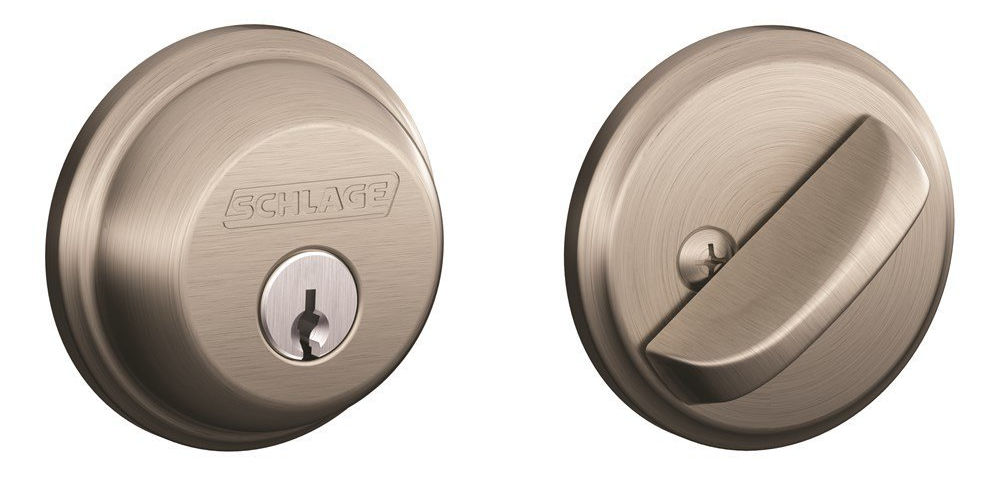
While there are limitations on the use of deadbolts in a means of egress, they are acceptable when all of the applicable criteria are met.
This is true – usually. Even doors serving small rooms such as single-occupancy restrooms and dressing rooms are required to unlatch with one releasing motion. NFPA 101 – The Life Safety Code does include an exception that allows two releasing operations for existing hardware on a door leaf serving an area with an occupant load of 3 people or less, as long as the two operations do not have to be performed simultaneously. BUT, this exception only applies to existing hardware (not new hardware on existing doors) on small rooms in buildings where NFPA 101 is the applicable code; the IBC does not include a similar exception.
There are exceptions in both the IBC and NFPA 101 that allow doors serving most multi-family residential dwelling units and sleeping units to have a deadbolt or other security device in addition to the latching hardware. These devices must be operable from the inside without the use of a key or tool, and must require only one additional releasing operation (refer to NFPA 101 for exceptions addressing existing security devices). The IBC limits this second security device to dwelling units with an occupant load of 10 or less – typically units with an area of 2,000 square feet, maximum.
Note that these dwelling and sleeping units must be Group R or Residential occupancies. Some types of units may fall under Group I (Institutional) or Health Care occupancies, and this exception does not apply to those occupancy types. In addition, there are some state and local code requirements which mandate that locks on dwelling units and sleeping units must unlatch with one operation. In these jurisdictions, a separate deadbolt would not be allowed in addition to the latching hardware. Deadbolts that are integral to a mortise lock or interconnected lock would be acceptable if both the latchbolt and deadbolt retract when the lever is turned. This type of lock would also be allowed for egress doors in other occupancy types. If panic hardware is required, a separate deadbolt should never be installed in addition to the panic hardware.
Deadbolts on fire doors must be labeled.
Many entrance doors to dwelling units and sleeping units are fire door assemblies. When deadbolts are installed on fire doors they must be labeled, which means that they have been successfully tested to UL 10C / NFPA 252 – the standards used to test and certify fire door assemblies and components. Components installed as part of a fire door assembly are required by NFPA 80 – Standard for Fire Doors and Other Opening Protectives, to be listed/labeled, so it is not permissible to install a deadbolt on a fire door if the deadbolt has not been labeled for this purpose. NFPA 80 also limits the job-site preparations and field modifications that may be performed on a fire door assembly. These limitations should be clearly understood before conducting any retrofit work on a fire door assembly.
Because the US codes and standards require fire door assemblies to have hardware with an active latchbolt, a labeled latchset or lockset would be required in addition to the labeled deadbolt. The deadbolt alone would not provide the positive latching function needed to keep the door in the closed and latched position if a fire occurred. It’s important to consider the requirements related to both fire and egress, as well as accessibility.
Double-cylinder deadbolts are acceptable in some locations.
Using a deadbolt that requires a key to unlock it from the inside seems like it would negatively impact egress, but in certain applications it is allowed by code. The locations where these locks are allowed by the IBC include: assembly occupancies with an occupant load of 300 people or less, business, factory, mercantile, and storage occupancies, and places of religious worship. In these buildings, the main door or doors may be equipped with locking devices that are operated by a key on the egress side (as well as a key on the exterior). The locking device must be readily distinguishable as locked, and there must be signage on or adjacent to the door on the egress side, stating “THIS DOOR TO REMAIN UNLOCKED WHEN THIS SPACE IS OCCUPIED.” The letters on the sign must be at least 1 inch high on a contrasting background. The use of the key-operated lock may be revoked by the code official for due cause.
The section of the model codes that applies to key-operated locks (double-cylinder deadbolts) would not allow the use of a single-cylinder deadbolt with a thumbturn. With that said, there are locations where a thumbturn deadbolt would be allowed:
- The application would have to be one where panic hardware is not required, or where a key-operated deadbolt is allowed as an alternative to panic hardware.
- The door would not be able to be fire-rated (unless it’s the entrance door to a dwelling unit or sleeping unit, or other location where two releasing operations are allowed).
- The deadbolt would have to be the only locking/latching device on the door (unless it’s the entrance door to a dwelling unit or sleeping unit, or other location where two releasing operations are allowed).
- The thumbturn and cylinder would have to be between 34 inches and 48 inches above the floor.
- The thumbturn would have to be operable without tight grasping, pinching, or twisting of the wrist.
Note: In the 2021 IBC, another section was added that would allow double-cylinder deadbolts on egress doors serving exterior specifies, if certain criteria were met. There is more information in this Decoded article.
Single-family and 2-family homes have different requirements for deadbolts.
The International Residential Code (IRC) has been adopted in most US states for the construction of 1- and 2-family homes; the IRC requires dwellings to have a code-compliant means of egress which opens directly into a public way or to a yard or court that opens to a public way. A dwelling unit must have at least one egress door that is side-hinged, and has a clear width of at least 32 inches and a clear height of not less than 78 inches. Egress doors must be readily openable from inside of the dwelling without the use of a key or special knowledge or effort. While a deadbolt with a thumbturn is typically acceptable on these doors, a double-cylinder deadbolt does not meet the IRC’s requirements for a lock on an egress door.
Classroom function deadbolts are commonly used on multi-stall restrooms.
In Chapter 29 – Plumbing Systems, the IBC includes a paragraph which states: “Where a toilet room is provided for the use of multiple occupants, the egress door for the room shall not be lockable from the inside of the room. This section does not apply to family or assisted-use toilet rooms.” According to the IBC Commentary, the purpose of this requirement is to prevent multiple-occupant toilet rooms from becoming safe havens for illicit activities.
In many facilities, doors serving multi-stall restrooms are equipped with classroom function deadbolts so the doors can be locked in case of a plumbing problem or for whatever reason access to the room needs to be limited. The function that is typically specified is a classroom function deadbolt, but there is sometimes confusion about how these locks are intended to operate.
A classroom function deadbolt can be locked and unlocked from the outside with a key. When locked (bolt projected), the inside thumbturn can be used to retract the bolt, in case someone is inadvertently locked inside. The inside thumbturn will not project the bolt (it will only retract it), so this type of lock meets the IBC’s prohibition on lockable doors serving multi-stall restrooms.
Note that the emergency plans for some schools and other buildings include the use of restrooms as lockdown areas where building occupants can go if they need to find a safe haven. To avoid uncontrolled lockdown of these rooms, one option could be a deadbolt function that would allow a teacher with a key to lock the door from the inside, but would also incorporate a thumbturn to allow free egress. The 2024 edition of the IBC will be revised so that this function will be permitted.
In most cases, deadbolts are required to meet the accessibility standards.
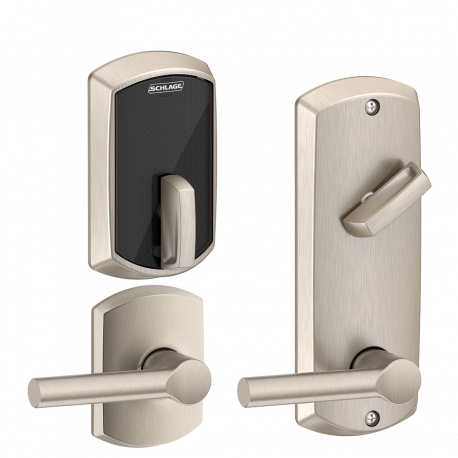
Operable parts of locksets, latchsets, and deadbolts must be within the allowable mounting height range, including keypads and other access control devices.
Door hardware must be operable with no tight grasping, pinching, or twisting of the wrist. That means that the thumbturn must be long enough to be operated with the side of someone’s palm, or the tip of a pencil, and within the operable force limitations of the applicable standard. Operable parts – including thumbturns, keypads, and access control readers – must be mounted between 34 inches and 48 inches above the floor or ground, or as required by state or local codes. Note that the allowable mounting height in California is more restrictive – 34 inches to 44 inches above the floor or ground. While there may be exceptions for existing deadbolts mounted in the bottom rail of a glass door, protruding hardware in that location can create a conflict with the requirement for a flush and smooth area in the bottom 10 inches on the push side of manually-operated doors.
One question that has come up recently is whether a deadbolt impacts the maneuvering clearance for a door opening. For a front approach on the push side of the opening, the accessibility standards require additional maneuvering clearance on the latch side if the door has both a door closer and a latch. The standards do not clarify whether the additional clearance would be required if the door has a door closer and a deadbolt instead of a latch. When I discussed this with International Code Council (ICC) staff, we agreed that because the deadbolt is held retracted and is not self-latching, the additional maneuvering clearance should not be required if the door is equipped with a door closer and deadbolt, with no positive-latching hardware. The official interpretation would be left up to the Authority Having Jurisdiction (AHJ).
Here’s the bottom line on deadbolts.
- Doors in a means of egress are required to unlatch with one releasing motion – with a few exceptions.
- In most jurisdictions, residential dwelling units and sleeping units are allowed to have a deadbolt in addition to the latching hardware.
- If installed on a fire door, the deadbolt has to be labeled for that purpose, and alterations to existing fire doors must be made in accordance with NFPA 80 and the manufacturer’s listings.
- Double-cylinder deadbolts are allowed under certain circumstances if the criteria stated in the code are met.
- Thumbturns and other operable hardware must operate with no tight grasping, pinching, or twisting of the wrist.
- Releasing devices must be mounted between 34 inches and 48 inches above the floor, or as required by state/local codes.
- Refer to the applicable codes and standards for additional information.
You need to login or register to bookmark/favorite this content.

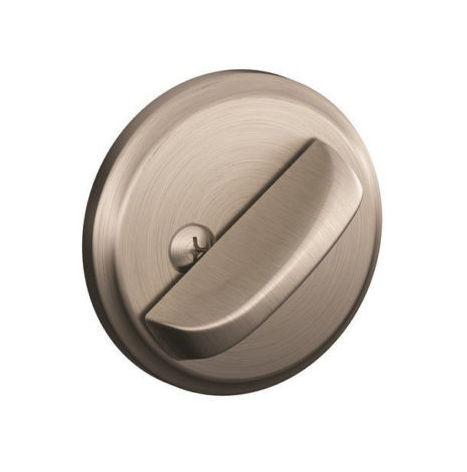

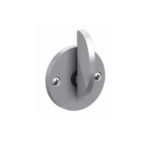


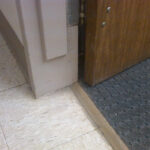
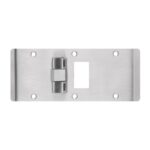
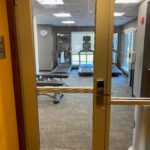
Very good article.
IBC code:
I am looking at some A/C closets, in a new apartment building. They are accessed from a rated corridor. The door is rated, but has a keyed dead bolt. A person cannot fit inside the closet, so not a space that can be occupied.
So it seems if they were a pair of doors, one door could be locked down, but sense it is only one door Is the dead bolt allowed as the required latching device??
Does the article need to talk about Latch Required/”active latch bolt”
Thanks again for refreshing my mind on dead bolts. Long time ago in warehouses, use to seem them on remote exits, and argued about them back then.
If it’s a fire door, it still needs latching hardware in addition to the deadbolt. I’ll clarify that in the article.
– Lori
Is a deadbolt (with a smaller thumbturn than a regular door) permitted on a screen door?
Hi George –
It depends on whether the screen door is required to comply with the accessibility standards or other codes that require hardware to operate with no tight grasping, pinching, or twisting of the wrist.
– Lori
Good article.
Having the following queries:
a. While using deadbolts for fire doors does it only means UL listing for fires from inside to outside or both inside to outside and outside to inside.
b. NFPA 80 – Doors for three hours calls for dividing building into fire prone areas – does that means inside is fire prone area and outside will be not fire prone. What if in case of fire in both sides?
C. When deadbolts are said to be UL listed does it qualifies to fit th deadbolts anywhere in a building or based on the door classification as per NFPA 80 the UL listing is also applied?
Hi Cecil –
Here are some answers:
a) During a fire test, the fire door assembly is exposed to fire on the furnace side of the door. But since it is unknown which side a real fire will originate on, theoretically the fire door would resist smoke and flames in either direction.
b) The place to look for more information on dividing walls is in the International Building Code. A 3-hour door is typically used in a fire wall. Fire walls (different from fire barriers) are used, for example, to separate one building from another. Fire walls are constructed so that if there is a collapse on one side of the wall, the construction on the other side could still stand on its own. These walls are not typically used to separate the inside of the building from the exterior.
c) If a door opening is required to comply with NFPA 80, all of the components of the assembly – including the deadbolt – must be listed for that purpose. But the UL 10C listing of a deadbolt does not mean that it can be used anywhere in a building. There are very limited locations where a deadbolt may be installed in addition to latching hardware – typically dwelling unit and sleeping unit entrance doors.
– Lori
Lori,
On the front door of a business, the use of a double cylinder deadbolt operated by a key on the egress side is acceptable. Does this mean a thumbturn is not acceptable?
Jim
Hi Jim –
In my opinion, the key-operated locking section would not apply to deadbolts with thumburns, but a thumbturn may be acceptable depending on a few things…
a) The application would have to be one where panic hardware is not required.
b) The door would not be able to be fire-rated (unless it’s the entrance door to a dwelling unit or sleeping unit).
c) The deadbolt would have to be the only locking/latching device on the door (unless it’s the entrance door to a dwelling unit or sleeping unit).
d) The thumbturn and cylinder would have to be between 34 inches and 48 inches above the floor.
e) The thumbturn would have to be operable without tight grasping, pinching, or twisting of the wrist.
Here’s some more info that might help: https://idighardware.com/2018/08/decoded-deadbolts-in-a-means-of-egress-october-2018/.
– Lori
Are deadbolts required on single and multi family housing? Such as dormitories and apartments. I know they are typically installed, but is it a requirement?
Hi Patrick –
It is not required by the model codes, but it is definitely a requirement for some states and cities.
– Lori
So who is the best person to contact to find out?
The Allegion code person for your state would probably know. There is an orange button in the right sidebar of iDigHardware that will lead you to a list of people for each state: https://idighardware.com/about-2/get-more-hardware-help/.
– Lori
Lori,
Can you elaborate on the statement “while there may be exceptions for existing deadbolts mounted in the bottom rail of a glass door?” I am in an NFPA 101 state and recently found two sets of glass doors with thumb turn deadbolts mounted just a few inches from the floor in the bottom rails. This occupancy was an existing assembly with an occupant load exceeding 600 persons, so there should be panic hardware with no thumb turns. These were push doors when the deadbolts were not locked. These doors were installed about 20 years ago. If they were in another type occupancy that did not require the panic hardware, could they be legal even though the deadbolt is not between 34-48 inches?
Thank you for your consideration.
Hi Paul –
I agree, for an assembly occupancy with a load of 600, the doors are supposed to have panic hardware. The IBC does have an exception to the height requirement that applies to “locks used only for security purposes” and I think the example used in the commentary is a bottom-rail deadbolt in a glass door. But this exception applies only to the mounting height – it doesn’t address the accessibility requirement for a flush smooth surface in the bottom 10 inches on the push side, and it especially doesn’t replace the egress requirement for panic hardware.
– Lori
I stumbled on this article while looking for a double cylinder dead bolt. My application is a historical society home. The property is uninhabited and the side door has a door with glass panels. One could easily break the glass reach in and unlatch the door. This is where I want to install this lock. Thank you
Hello. Where do I go to find out if dead bolts are required in single family rental properties in knoxville tennessee?
Hi Christine –
That would be a local requirement, but I’m not sure which government office would be requiring them.
– Lori
I am currently in a healthcare occupancy and have to comply with NFPA101, were can I find the exception that allows two releasing operations for existing hardware on a door leaf serving an area with an occupant load of 3 people or less, as long as the two operations do not have to be performed simultaneously.
Hi Terry –
Here is where this is found in the 2012 edition of NFPA 101:
7.2.1.5.10.6 Two releasing operations shall be permitted for existing hardware on a door leaf serving an area having an occupant load not exceeding three, provided that releasing does not require simultaneous operations.
– Lori